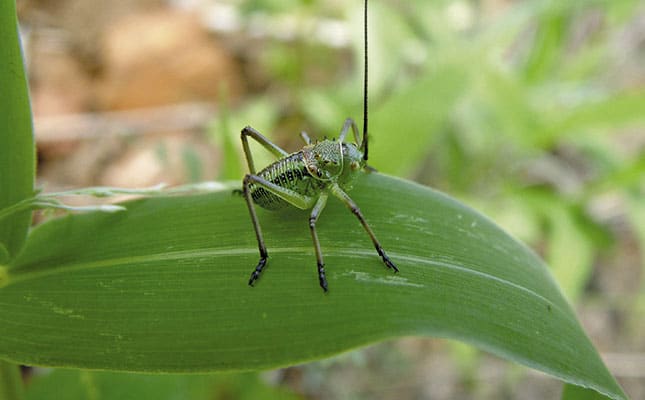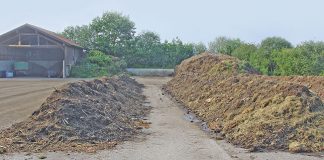
Photo: Paul Donovan
The corn cricket is one of the crop pests that bug crops, Reaching up to 4cm in length, they have soft, plump bodies covered with small, sharp spines. Both sexes lack hind wings, and males have reduced forewings. Colouration varies from brown to dark grey, although one African species shows a rich blend of yellow and fawn brown with contrasting black spines on the foremost segment of the thorax and bright red antennae.
READ: Disease insect control in grapes
Identifying the corn cricket
Family: Tettigoniidae
Genera: Acathoplus, Enyaliopsis, Hetrodes
Species: A. discoidales, E. transvaalensis, H. pupus
Juveniles of most species of corn cricket are usually lime green with black and brown markings. This colour changes with each successive moult. In small numbers, corn crickets present little threat to the farmer. But when population explosions occur, they can have a devastating impact on many types of crops, particularly sorghum and millet. The crickets’ large jaws allow them to eat even the most robust plant cellulose and, in some instances, crop yields may fall by as much as 40%.
Mating and Reproduction
Males attract females with a high-pitched mating call made by rubbing their forewings together. This can be heard during the day, particularly when large numbers of males try to attract females. During the evening, the sound can be mistaken for the call of little frogs. Once mated, the female will carry a jelly-like substance called a spermatophore donated by the male to fertilise its eggs.
When fertilisation is complete, the female places its rear end on the ground, penetrates it with its curved, sickle-like ovipositor and proceeds to lay small clusters of about 30 eggs at a time.
Depending on the species, the corn cricket lays its eggs about 5cm deep. As each cluster is laid, it is bathed in foam that sets hard, helping to protect the eggs from dehydration during their development. Each egg is yellow and little more than a grain of rice in size.
They are laid in a variety of soil types, from bone-dry to moist, and will remain in the ground until the first rains arrive, when they begin to hatch.
When rains are frequent, numbers may be relatively low. However, if the rains fail to materialise, the eggs can lie dormant for 12 months or more. When the rain eventually arrives, thousands of eggs hatch at the same time, leading to a population plague.
Effective control measures for the corn cricket
Manual removal
Because of their large size, corn crickets can be removed from the plant by hand. When disturbed, many fall to the ground in defence. Wear gloves, as they bite.
Insecticides
Most broad-spectrum insecticides are effective, as is dusting with carbaryl dust.
Ditches
Plough a ditch 40cm to 50cm deep by 40cm to 50cm wide around the land. The crickets will fall into this and be trapped – they cannot fly. They will then be picked off by natural predators such as birds, small mammals and jackal.
Because crickets have cannibalistic tendencies, trapped individuals will also start eating one another. Research has shown that a trench around a field is more cost-effective than using insecticide.
Integrated pest management
Because of their well-armoured exterior, adult corn crickets have only a limited number of natural enemies. This means that integrated pest management is of limited effect. The young, however, are preyed upon by a host of predators, including assassin bugs, tiger beetles and centipedes.
This series is a guide to identifying crop pests. The control methods discussed are merely suggestions. For help with area- or crop-specific control, consult an agricultural extension officer.
Paul Donovan is a biologist based in Botswana, where he advises farmers on the use of biological control agents. Email him at [email protected].
This article was originally published in the 7 February 2014 issue of Farmers Weekly.












